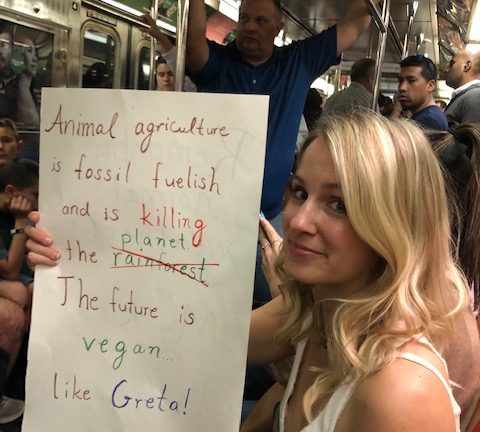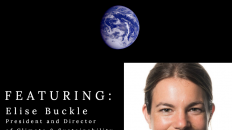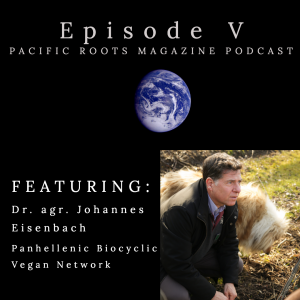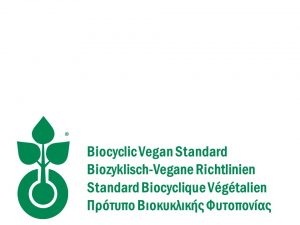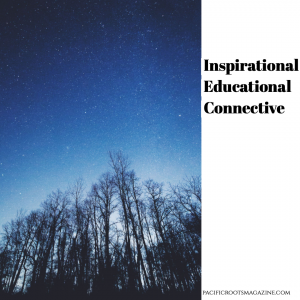by Marisa Miller Wolfson
2020 Eco “Honey Do” List
Part 1: Activism

Two months ago we watched Australia burn. A few months before that it was California. Before that it was the rainforest. I still have images of thirsty koalas with singed fur and the hills around the winding California highways on fire seared into my brain. Compounding this is the knowledge that this is just the very beginning stages of our new reality, with much, much worse to come unless we take swift action to alter the course of history. As we tick off more boxes off of the “what to expect in a warming world” list given to us by scientists, many of us are experiencing major eco-anxiety and are looking for ways to help.
Pacific Roots put out a call to readers for a “honey do” list of things we can do personally to help avert the worst of what is supposedly to come. I’ve been yammering on about healthy, humane eco-friendly living for over 15 years in schools, churches, and on camera, but I’m constantly learning from others, so I hope this will just be the start of a dialogue about ways that we can all do better.
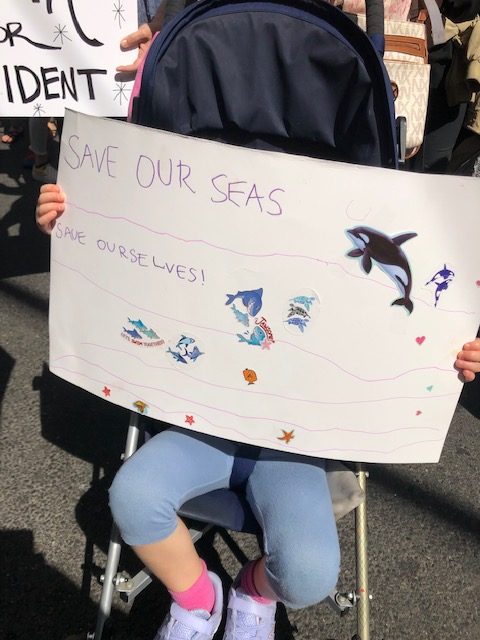
This article is Part 1 of my list. In Part 2 we’ll get into personal changes in habits and homes, but the truth is that even if we all changed our light bulbs, brought canvas bags, turned vegan and shopped locally and in season, it wouldn’t be enough, sadly, without radical shifts in industry and infrastructure. We need big changes, and we need them now. We’re talking solar-panels-over-every-parking-lot level of change. We’re talking a war-time effort that will make America the truly great global leaders we were last century when we all pulled up our bootstraps, grew victory gardens, and managed to do the impossible while forever changing the work force, employing record numbers of women for the first time. Think of all the jobs that would be created with a massive infrastructure overhaul now—jobs that could not be outsourced. It would be like a modern day WPA. How do we create the momentum to do that?
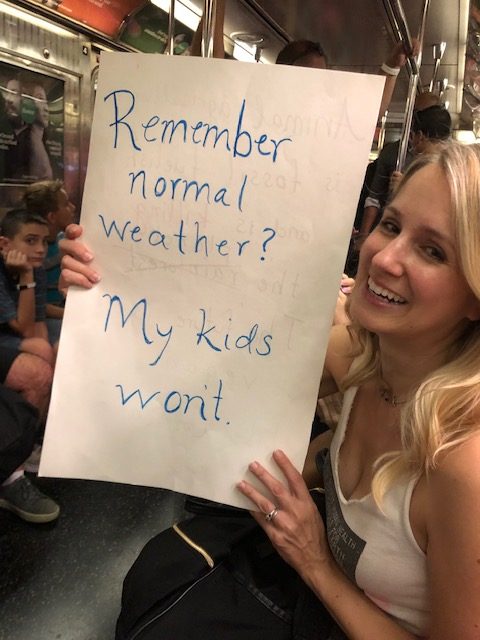
- Support super green candidates locally and nationally and be a squeaky wheel with your elected representatives.
The global summits seem be getting us nowhere, so our nations have to take the lead individually, and if nations don’t (looking at YOU, dear U.S. of A!) then states will have to. States build ideas and successes based on what other states and on what cities are doing successfully. Cities look to each other for ideas for what’s possible and what’s working. You can be a part of that. Find green candidates, knock on doors for them, phone bank, gather signatures to get them on the ballot or host fundraisers, and once they’re in office, bug them and bug them. They work for you, and you, their constituents, set their agenda. The squeaky wheel gets the grease. The polite, supportive squeaky wheel gets the grease and, potentially, the glory.
Super quick personal story in which I get all the glory (in my head). It’s 2009. I’m working for an eco non-profit that teams up with a handful of other non-profits in NYC, forms an alliance, and (partly in my living room—ahem–glory glory glory) writes a city council resolution to lower the city’s carbon “foodprint,” which encourages more plant-based eating as part of its goals. A New York city council member by the name of Bill de Blasio gets excited about it and sponsors it, but it goes nowhere with Christine Quinn as speaker of the City Council. De Blasio becomes NYC’s public advocate, then runs for mayor against Christine Quinn. The NYC animal rights community takes down Quinn, rallies around de Blasio and helps deliver a victory to him. As mayor, he decides all 1800 public schools should adopt Meatless Mondays and stops buying processed meats for any municipal purposes and pledges to lower red meat purchasing by the city by 50% as part of the NYC Green New Deal. Our little food resolution was one of many seeds planted and nurtured in the mayor’s brain about plant-based living, but the moral of the story is that you never know where your living room effort or your green candidate will end up or what they will accomplish, even if it takes ten years.
The U.S. presidential race. We all remember what the morning of 11.9.16 felt like. We all thought, “I should have done more.” We have about 8 more months to do more. To actually avert the collapse of the global economy, a refugee crisis and wars over resources, we need a presidential candidate who will take this issue on front and center. Presidents can generally seriously tackle about one issue per presidency. Obama chose healthcare. This next president must take on climate change. Who is that president? We must rally around that person. And if they don’t get the nomination, we must rally around whichever Democrat does get the nomination because the most vulnerable people (and animals) in the world can’t afford for us to make perfect the enemy of the good. Then we all have to be the squeakiest wheels you ever did hear.
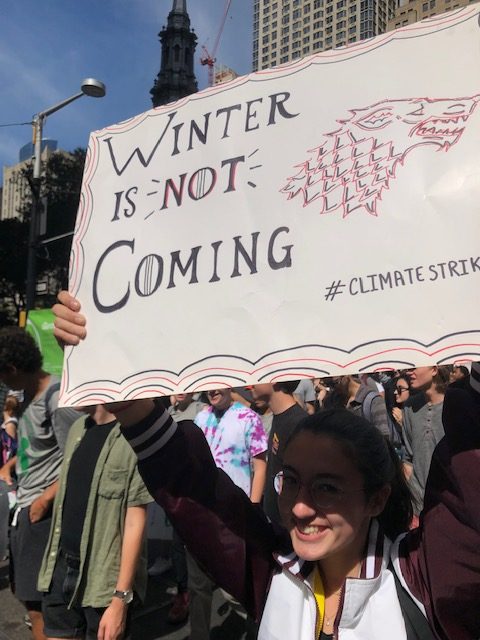
- Raise a ruckus. Break the law.
The only movements that truly succeed are the ones in which those affected rise up and disrupt the status quo. Whether that’s lunch counter boycotts, chaining oneself to railings outside Buckingham Palace or hunger strikes, big changes in the law have started with people breaking the law or raising a ruckus. The youth have risen up because it’s their future that’s being affected. Join the Fridays for Future school strikes as a parent or ally or join a Fire Drill Friday protest and get arrested with Jane Fonda and her crew if you can. Join Extinction Rebellion. All such activists in history were dismissed as “radicals” and “extremists” until they’ve won.
- Take your green “Someone should…” idea and then be that someone.
How many times in your life have you thought, “someone should really…” and then no one did, so you did, then others followed your lead and good things happened? Let’s refocus that energy to green initiatives and see what happens.
- Organize a community clean up or just pick up a bag yourself and clean up a polluted space.
My friend from my hometown, Christine Beyer, kept noticing how polluted a big field was next to one of her favorite vegan-friendly supermarkets and thought, “someone should really clean that up.” She says, “I just hate seeing people take such poor care of our planet, plus I like to be an example of action and things we can do. So I had the idea to ask our vegan group to start doing cleanups, and Vegan of Evansville Community Action was born!” Together the action group from the Vegans of Evansville Facebook group produced 23 bags of trash on their first cleanup. Now they are petitioning the local businesses to try to curb the pollution at its source, and they teamed up with the nature preserve to clean up local wetlands one Sunday per month. Even if you can’t stop the pollution from its source, local cleanups are a profound experience because you are directly confronted with what people dispose of and you can’t help but think of the similar things you use in your own life and how you might avoid using those in the future. Want to multiply that impact? Write about your experiences, post photos, and call the press so they know about future cleanup events.
Whenever I’m on vacation in the Cayman Islands, where my in-laws have a condo, I do daily beach cleanups and, as a result, have reduced my plastic consumption. It’s amazing how much plastic and trash you can clean up in just 20 minutes a day. It’s extremely rewarding because it’s total instant gratification. There was trash there 20 minutes ago and now there’s not. Yes, the trash you picked up might end up in a landfill if it’s not recycled, but it likely has been averted from a river or a stream that flows into the ocean, where it can end up in a whale’s belly or in the Pacific garbage patch. About 70 percent of ocean trash starts off on land. You can help avert some of that from going into the ocean or back into the ocean and beautify your little neck of the woods while you’re at it. I took a photo of the tiny pieces of styrofoam caught up in seaweed on the beach and emailed it to the Italian restaurant that served my kids water in Styrofoam cups with plastic lids and straws. Instant activism opportunity. Boom.

- Start/join a sustainability committee in your school, place of work or worship, etc.
Greening our homes affects the waste we produce, but greening our institutions affects the waste that a whole lotta people produce. What’s more effective: trying to be the perfect zero-waste household or inspiring dozens if not hundreds of people to make small changes that add up? It’s kind of a false comparison because ideally we are doing both, but if we are going to truly tackle this challenge, we need to think big. Does your company buy recycled copy paper? Does your synagogue buy recycled toilet paper? Can your school host a clothing swap for kids’ clothes so we can increase the amount of clothing that’s reused and save each other money? Are colleagues recycling correctly or do they need someone to post reminders of what goes in which bin? Are there delicious plant-based food options at school fundraisers that could lure teachers or students plantward? Can the institution buy renewable energy from the local power grid? What about carbon offsets for travel? Leaders and execs can be reminded that the younger generations prefer to work for companies that have a positive mission. It’s a great way to attract talent and boost company image.
When the Australian fires were reaching peak news coverage, I called another green mom from my kids’ school and said, “we need to do something.” I thought: start a sustainability fund to put solar panels on the roof. Get the kids involved, look for grants, tax incentives and ways that teachers could integrate it into the curriculum. The mom agreed, said she was on the same page and told me I should ask to join the sustainability committee. I did, and we had our first meeting this week. The director of the school is now going to look into past energy audits and green energy inquiries. We also decided on an Earth Day interactive event and display that would showcase to parents examples of products or ways to green the home. Stay tuned for Part 2 of this article series highlighting some of the fantastic new products out there.
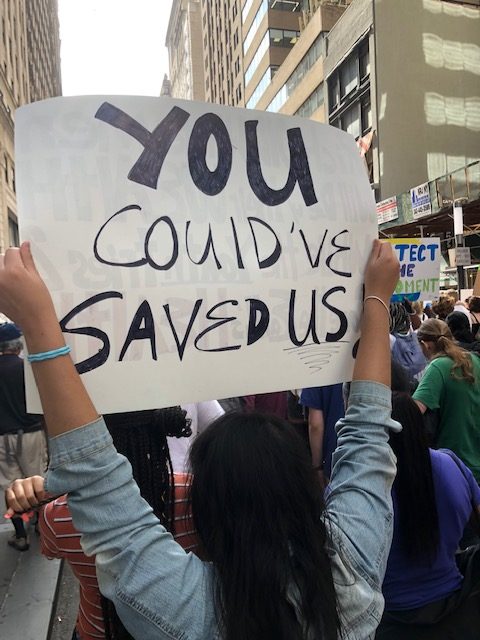
- Inform yourself.
All hail the podcast! My new favorite podcast for being informed about issues surrounding climate change is Ezra Klein’s. To feel energized and hopeful, listen to “How to solve climate change and make life more awesome” with inventor/engineer Saul Griffith and “Generation Climate Change” with Varshini Prakash of the Sunrise Movement. To feel validated, slightly depressed yet emboldened and clear-headed, listen to “Republicans vs. the planet.” I also find the Outrage and Optimism podcast helpful, especially the episode “How to Face The Mess We’re in Without Going Crazy with Joanna Macy,” a Buddhist scholar and environmentalist who gives us much-needed perspective and helps us reframe the whole crisis as an opportunity and allows us to embrace the best of humanity. As you probably know, Pacific Roots Magazine started a podcast too. Annika interviews people on the vanguard of the vegan movement, including the creator of the new biocyclic veganic standard of farming and Fred Beasley of NYC Hip Hop is Green. Another way to stay in the loop on green issues is to follow your favorite green orgs on social media. Some of my favorite green accounts to follow on Instagram include: @extinctionrebellion @gretathunberg @fridaysforfuture @sunrisemvmt @100isnow @leonardodicaprio @racingextinction @vegnews @green4ema @amazonwatch @climatereality
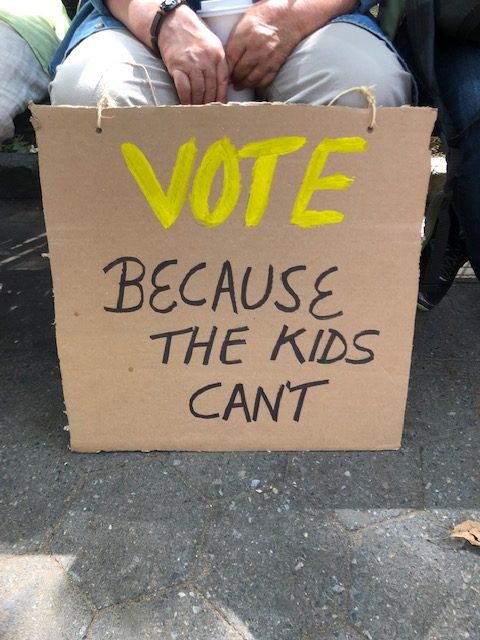
Joining a local, state or national environmental group’s email list is a great way to stay abreast of local/state or federal campaigns or legislation that you can contact your reps about.
I heard a saying once that in everything good there is a seed of bad and in everything bad there is a seed of good. Maybe the Obama years and being part of the Paris Accord, which it turns out isn’t nearly ambitious enough, left us feeling too complacent. States and cities stepped up in reaction to Trump in a way that they otherwise might not have. Now maybe the fires are the kick in the pants we need to be the people who say, “You know, somebody should really…” and become the leaders we need.

Marisa Miller Wolfson is the creator of the award-winning documentary Vegucated, a food activist and currently working on her first cookbook, The Vegucated Family Table: Irresistible Vegan Recipes and Proven Tips for Feeding Plant-Powered Babies, Toddlers, and Kids, due to come out in August.

